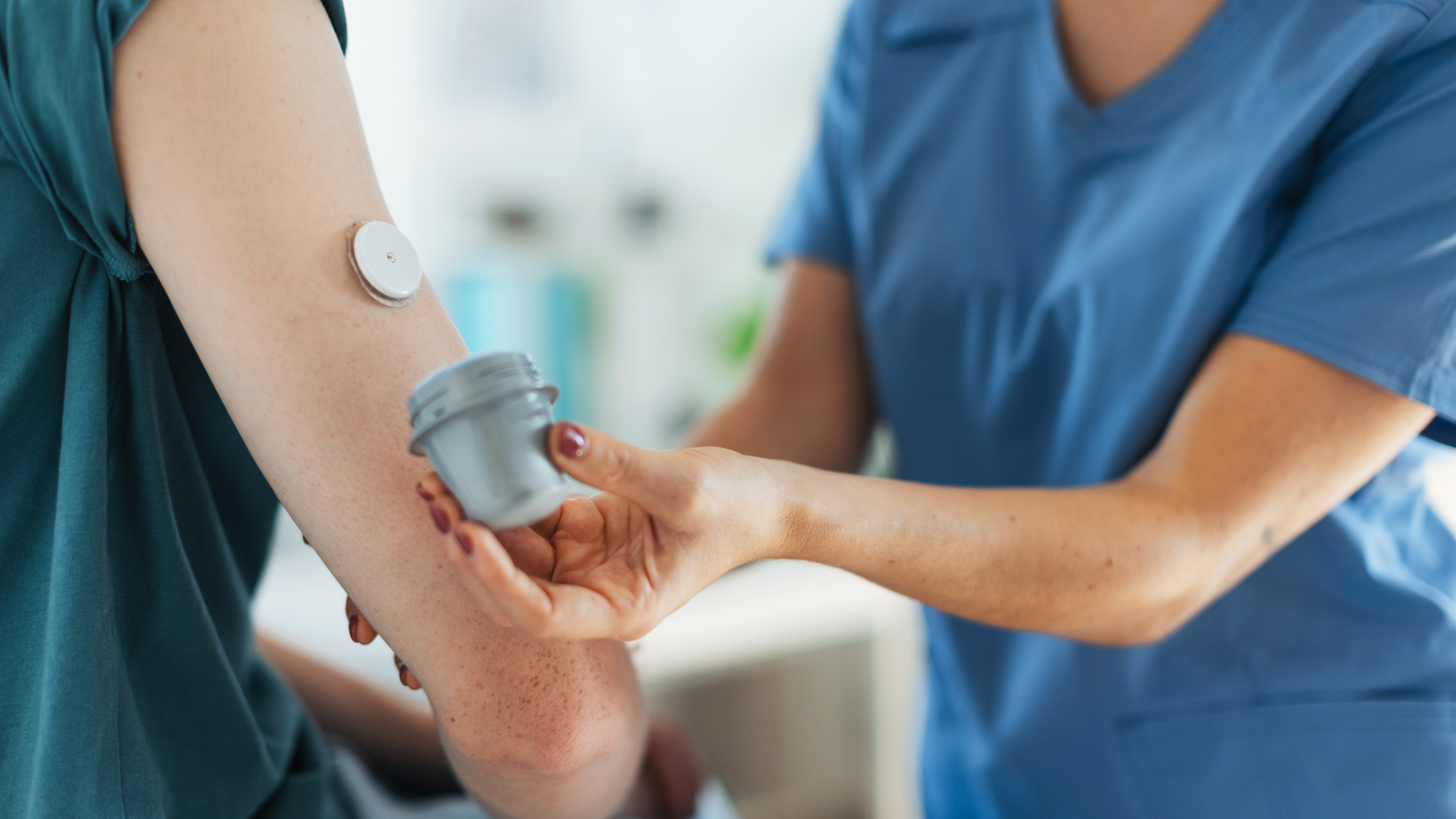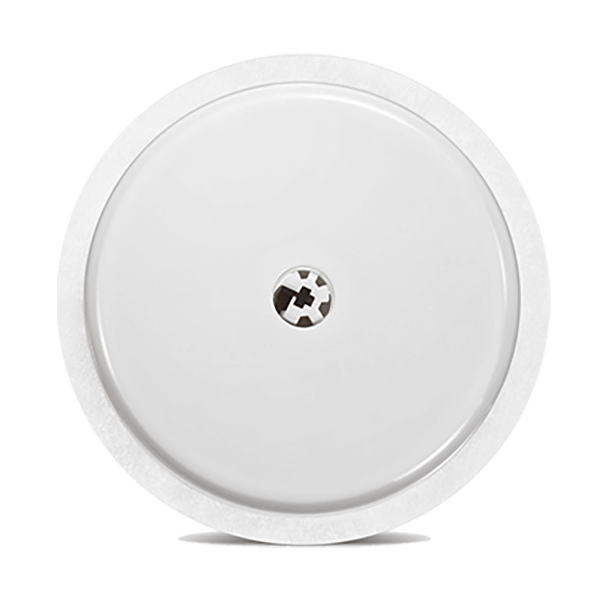If you’re curious about Continuous Glucose Monitor—devices that provide real-time blood sugar levels—you’re in the right place. Our guide will reveal how these continuous glucose monitors work, their role in preventing diabetes complications, and why they’re an upgrade from traditional glucose testing methods. Expect to see how CGM can change the game for those at risk of or already managing diabetes.
Key Takeaways
- Continuous Glucose Monitoring (CGM) devices aid in the early detection of prediabetes, offering comprehensive, real-time blood sugar tracking that traditional tests may miss.
- Adopting lifestyle changes such as a healthy diet and regular exercise, along with the use of CGM devices can reverse prediabetes and prevent development into type 2 diabetes.
- Advancements in CGM technology have resulted in more compact, user-friendly, and accurate devices that can help patients manage their health better, potentially leading to significant long-term financial savings by avoiding or postponing diabetes-related costs.
What is Prediabetes?
Prediabetes is the presence of higher blood sugar levels that don’t yet qualify for a diabetes diagnosis. It indicates a higher risk of developing diabetes in the future. Consider it a red flag, signaling the potential of type 2 diabetes development if no proactive steps are taken. The American Diabetes Association estimates that over 88 million American adults—approximately 1 in 3—have prediabetes. However, an alarming 84% of these people are oblivious to their condition.
You may be wondering, “How can I know if I have prediabetes?” A blood sugar test is your best bet. The test checks your fasting blood glucose levels, and results in the range of 100 to 125 mg/dL could indicate prediabetes or impaired glucose tolerance. Other tests like the plasma glucose test or an oral glucose tolerance test can also diagnose prediabetes. However, prediabetes often has no clear symptoms, making regular screenings crucial.
A prediabetes diagnosis doesn’t necessarily condemn you to develop type 2 diabetes. With lifestyle changes like adopting a prediabetes diet and regular exercise, you can reverse prediabetes and bring your blood sugar levels back to a healthy range. Early detection and proactive management can help prevent prediabetes from progressing into full-blown diabetes, which can lead to complications like heart disease and damage to blood vessels.
Understanding Prediabetes

Having understood what prediabetes is, we can explore further. Prediabetes is often asymptomatic, meaning you might have it and not know. Hence, the significance of regular screenings cannot be overlooked. Certain risk factors increase your chances of developing prediabetes, including:
- Excess weight
- High blood pressure
- A history of gestational diabetes
- Insulin resistance
A key player in understanding and managing prediabetes is Continuous Glucose Monitoring (CGM). CGM devices can help identify prediabetes earlier than traditional blood sugar tests, offering a powerful tool in your health arsenal. These devices keep a constant eye on glucose levels, offering an on-the-go monitoring system that:
- Paints a broader picture of your health than a solitary blood sugar test
- Provides real-time data on glucose levels
- Alerts you to high or low glucose levels
- Helps you track patterns and trends in your glucose levels
For people with prediabetes, CGM devices prove particularly beneficial as they notice the blood sugar level fluctuations that might slip past traditional testing. This can empower you to make informed decisions about your diet and lifestyle to manage your blood sugar levels effectively.
The Advancements in CGM Technology

CGM technology has come a long way over the years. What started as bulky, inconvenient devices have evolved into sleek, user-friendly monitors that provide accurate real-time glucose readings. This evolution is propelled by substantial technological breakthroughs and a heightened consciousness about the necessity of efficient, early diabetes management.
Modern CGM devices furnish users with a plethora of information. They can show you:
- How your blood sugar levels are trending over time
- Alert you if your levels are too high or too low
- Predict future blood sugar levels based on current trends
All of this data can be shared with your healthcare provider, allowing for more informed decisions about your treatment plan, including potential participation in clinical trials.
The burgeoning of CGM technology has not just enhanced device accuracy but also their convenience. Modern CGM systems are often compact, easy to use, and come with features like alarms and alerts that notify you of significant changes in your blood glucose levels. These advancements have made CGM an invaluable tool in the fight against diabetes and prediabetes.
The Importance of Early Detection in Prediabetes
The significance of early detection in prediabetes is immeasurable. Catching and managing prediabetes before it progresses into diabetes mellitus, specifically type 2 diabetes, can significantly reduce your risk of developing diabetes complications, such as heart disease, kidney disease, and nerve damage.
Regular blood tests can help detect prediabetes early, but they only provide a snapshot of your blood sugar levels at a single point in time. That’s where CGM devices come in. By monitoring your glucose levels continuously, CGM devices can detect fluctuations that might not be caught with traditional testing, offering a more comprehensive picture of your blood sugar levels.
Early identification of prediabetes allows for proactive measures to reverse it, which may include healthy diet adoption, increased physical activity, and weight maintenance. Not only can this diabetes prevention program help you lose excess weight and prevent prediabetes from progressing into type 2 diabetes, but it can also improve your overall health and well-being.
How CGM Empowers Patients
CGM devices grant patients the power to govern their health. They allow you to:
- Keep a close eye on your blood sugar levels in real-time
- Understand how different factors like food, exercise, stress, and medication affect your levels
- Make enlightened decisions about your diet and lifestyle to effectively manage your prediabetes
Using a CGM device can also make it easier to share information with your healthcare provider. You can show them your blood sugar patterns and trends, which can help them provide more personalized advice and treatment. This collaborative approach to care can enhance your understanding of your condition and improve your health outcomes.
Additionally, CGM devices can offer reassurance and a sense of tranquility. Knowing that you’re keeping a close eye on your blood sugar levels can alleviate worries and help you feel more in control of your health. However, remember that using a CGM device doesn’t replace regular check-ups with your healthcare provider. It’s a tool to aid in your overall diabetes care.
Financial Savings with Early Diagnosis
Beyond the health benefits, early diagnosis and management of prediabetes using CGM devices can also lead to significant financial savings. Managing diabetes can be expensive, with costs associated with medication, regular check-ups, and potential hospitalizations for severe cases.
With early detection and management of prediabetes, you can avert or postpone the onset of type 2 diabetes and its accompanying costs. While there’s an initial investment in purchasing a CGM device, the long-term savings in reducing the need for medication and hospital visits can outweigh this cost.
The financial implications extend beyond the individual, too. The American Diabetes Association estimates that diabetes costs the U.S. healthcare system $327 billion annually. By preventing prediabetes from progressing into diabetes, we could significantly reduce this financial burden on the healthcare system.
Lifestyle Changes for CGM Users

The use of a CGM device may necessitate certain lifestyle modifications. You’ll need to learn how to use the device, maintain it, and interpret the data it provides. While this might feel overwhelming at first, the benefits of using a CGM device far outweigh these inconveniences.
A CGM device can provide valuable insights into how your lifestyle impacts your blood sugar levels. For instance, you might notice that your levels spike after eating certain foods or drop after physical activity. This information can empower you to make healthier lifestyle choices, such as adopting a balanced diet and regular exercise routine.
Though initial use of a CGM device may require an adjustment period, many users discover that the advantages greatly surpass the minor inconveniences. The advantages of using a CGM device include:
- The ability to monitor your blood sugar levels in real-time
- Make informed lifestyle changes
- Potentially prevent the progression of prediabetes to diabetes
These benefits make CGM an invaluable tool in your health journey.
Choosing the Right CGM Device
Selecting an appropriate CGM device forms an essential part of prediabetes management. You’ll want to consider factors such as accuracy, convenience, and cost. It’s important to choose a device that fits your lifestyle and meets your specific needs.
Aptiva Medical offers a range of CGM devices from leading brands, providing you with various options to choose from. Our team can help you understand the features and benefits of each device and guide you in making the right choice.
Beyond device selection, a thorough understanding of its proper use is also vital. We’re here to support you every step of the way, from choosing the right device to teaching you how to use it effectively. At Aptiva Medical, we believe in empowering our patients with the knowledge and tools they need to take control of their health.
Summary
Prediabetes is a condition that can progress into type 2 diabetes if not managed effectively. The good news is that with early detection and proactive management, you can prevent this progression and maintain your health.
Continuous Glucose Monitoring (CGM) devices play a significant role in this process. They provide real-time data about your blood sugar levels, empowering you to make informed decisions about your diet and lifestyle. By using a CGM device, you can take control of your health, prevent the onset of diabetes, and live a healthier life.
In conclusion, while prediabetes is a significant health concern, it’s not a life sentence. With the right tools and resources, you can manage your prediabetes effectively and lead a healthy life. So, take that first step today towards a healthier tomorrow.
Frequently Asked Questions
Can I just buy a continuous glucose monitor?
You need a prescription to purchase a continuous glucose monitor, and Medicare typically covers it through the durable medical equipment (DME) benefit. It’s important to consult with your healthcare provider before purchasing a CGM.
Check your eligibility for a CGM with Aptiva Medical for free.
Do I need a prescription for a continuous glucose monitor?
Yes, you will need a prescription for a continuous glucose monitor, as it is considered a medical device that requires professional oversight and guidance.
How much does a CGM cost?
The cost of a continuous glucose monitor can range from $100 to $300 per month, depending on the brand and pharmacy. This generally covers the sensors and transmitters.
Can I get a continuous glucose monitor for free?
You can get a continuous glucose monitor for free by asking your doctor to prescribe one and using a voucher at your preferred pharmacy. This process may involve a 3-step process, but it can result in receiving a free CGM.
What foods to avoid if you are prediabetic?
To avoid developing prediabetes, limit intake of sugary beverages, cakes, cookies, candy, and snacks, as well as portion sizes of white bread, white rice, and white pasta.
















